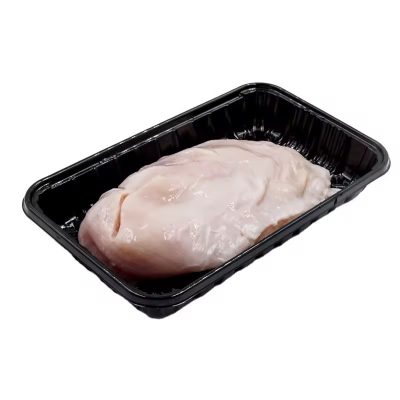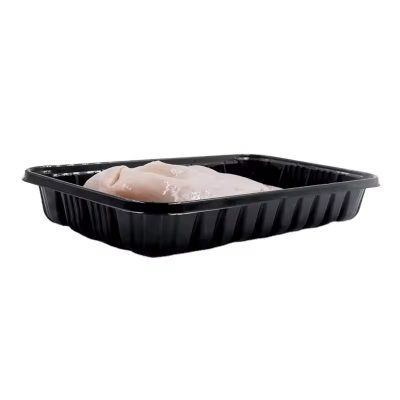Meat packaging is essential in the meat industry, serving to maintain the quality, safety, and shelf life of meat products from processing to the consumer’s table. This article delves into the significance of meat packaging, its essential components, benefits, design considerations, and the industry’s shift towards more sustainable practices.
The Importance of Meat Packaging
Meat packaging is designed to protect meat products from contamination, spoilage, and physical damage during transportation, storage, and display. Effective packaging not only preserves the freshness and quality of meat but also ensures safety for consumers by preventing bacterial growth and extending the product’s shelf life.
Key Components of Meat Packaging
Packaging Material: Common materials include various plastics (such as polyethylene, polypropylene, and polyvinyl chloride), paperboard, and composite materials. The choice of material depends on the type of meat, its shelf life requirements, and storage conditions.
Sealing Mechanism: Proper sealing mechanisms such as vacuum sealing, modified atmosphere packaging (MAP), and skin packaging are crucial to prevent oxygen ingress, which can lead to spoilage and bacterial growth.
Labels and Branding: Labels provide essential information including the type of meat, weight, nutritional facts, expiration date, and handling instructions. Branding elements help differentiate products and enhance consumer appeal.
Benefits of Effective Meat Packaging
Extended Shelf Life: Advanced packaging techniques like MAP, which replaces the air inside the packaging with a gas mixture (typically carbon dioxide and nitrogen), help extend shelf life by slowing down microbial growth and oxidation.
Safety and Hygiene: Proper packaging prevents contamination from external sources, ensuring that the meat remains safe for consumption. Vacuum packaging removes air, reducing the risk of bacterial growth.
Consumer Convenience: User-friendly packaging designs with easy-open features and resealable options enhance consumer convenience and reduce waste.
Brand Differentiation: High-quality packaging with clear labeling and attractive branding helps products stand out on shelves, influencing consumer choices and building brand loyalty.
Design Considerations
Material Selection: Choosing materials that provide effective barriers against oxygen, moisture, and contaminants. Sustainable materials are increasingly preferred to reduce environmental impact.
Packaging Technology: Utilizing technologies like vacuum sealing, MAP, and active packaging (which incorporates substances that absorb oxygen or emit carbon dioxide) to maintain meat freshness and safety.
Ergonomics and Functionality: Designing packaging that is easy to handle, open, and reseal, improving user experience and minimizing food waste.
Sustainability: Incorporating recyclable or biodegradable materials and reducing packaging waste to meet consumer demand for environmentally friendly options.
Trends in Meat Packaging
Sustainable Packaging: Growing use of biodegradable and recyclable materials, such as compostable films and recycled plastics, to minimize environmental impact.
Smart Packaging: Integration of technology such as time-temperature indicators (TTIs) and freshness sensors that provide real-time information about the product’s condition.
Enhanced Shelf Life Technologies: Use of advanced technologies such as MAP, vacuum packaging, and active packaging to extend shelf life and maintain product quality.
Minimalistic and Transparent Packaging: Trends towards using less material and incorporating clear packaging to allow consumers to see the product, enhancing trust and appeal.
Conclusion
In conclusion, meat packaging plays a vital role in ensuring the quality, safety, and longevity of meat products. The selection of materials and packaging techniques significantly impacts the preservation and appeal of meat, adhering to the stringent safety and hygiene standards required in the food industry. As the sector progresses, there is a clear shift towards sustainable and innovative packaging solutions that not only meet consumer demands but also contribute to environmental conservation. By focusing on protection, convenience, and sustainability, meat packaging continues to evolve, making a substantial impact on the modern marketplace.







